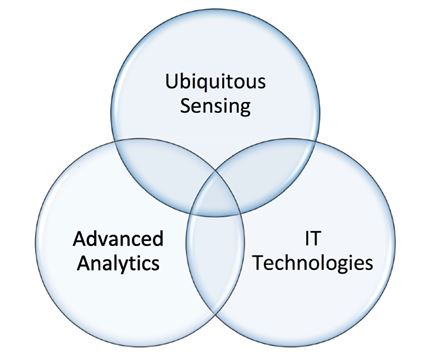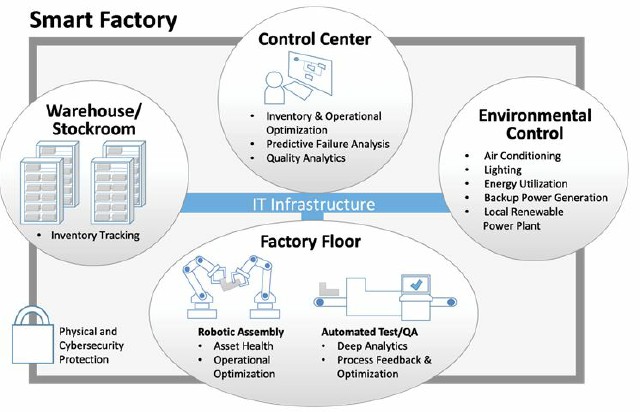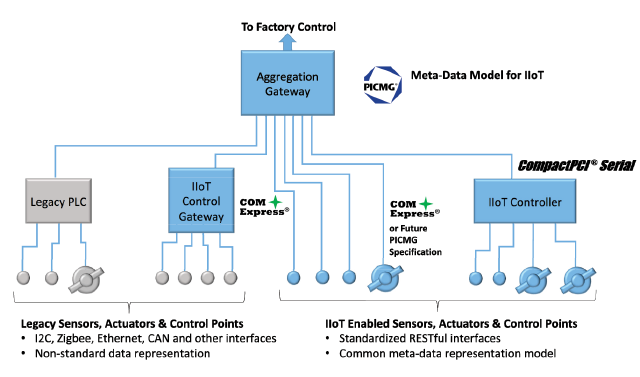It has been more than a decade since the Internet of Things was born. Its vision is still far from being realized. Although some important advances have been made, such as wearable devices, temperature measurements, smartphones, etc., users have not yet felt the enormous benefits that connected devices can bring. Cloud computing, big data, and artificial intelligence are accelerating the development of the Internet of Things, and at the same time bring new challenges. Today, the biggest obstacles to the commercialization of the Internet of Things involve information security (technical), personal privacy (social), and cost benefits (economic). PICMG's standards-based solutions can greatly facilitate the deployment of Industrial Internet of Things (IIoT).
This is not to say that the future of the Internet of Things is bleak, but that the current applications are the most appropriate, that is, the above obstacles are not particularly important. The same applies to the industrial markets served by PICMG, such as military, medical, transportation, and industrial automation. The embedded computing and control solutions used have long been popular. Today's PICMG computing technology is applied to the ground, air, and sea, and they control the military. Equipment, transportation facilities and smart factories provide key functions for scientific and medical instruments.
PICMG is exploring ways to accelerate the landing of IIoT, helping companies to innovate high-quality, interoperable computing solutions by providing open computing specifications and design guidelines. PICMG is leveraging its strengths in industrial computing to expand into the IoT space and collaborate with other IIoT standards organizations.
Industrial IoT Unique Features
There are three main differences between IIoT and traditional industrial automation: ubiquitous perception, advanced data analysis, and IT methodology. It is briefly described as follows:
Pervasive Perception <br> Like the ubiquitous connectivity of consumer IoT smart devices, one of the basic features of IIoT is the ubiquitous, interconnected sensors and actuators. Unlike traditional automation, which uses sensors and actuators at key stages of control, IIoT's sensors and actuators are also commonly used in utility operations, machine state prediction, environmental indicator monitoring, product quality management, and other diversity functions. The ubiquitous perception is another cornerstone of IIoT - the key to advanced data analysis.
Advanced Data Analysis <br> Advanced Analysis Through the acquisition of sensor data, the IIoT system can achieve a higher level of operational efficiency. Smart factories and other IIoT applications can use advanced data analysis to improve equipment uptime, optimize asset utilization, reduce total cost of ownership, and improve the company's operational efficiency, which is the main driving force for the accelerated landing of IIoT.
IT methodology
The third characteristic of IIoT is that the evolution of traditional automation technology has increasingly utilized information technology. This trend brings three benefits. One is that information technology enables IIoT to benefit from a larger pool of talent; the other is that the standardization practice of information technology helps to eliminate information islands of proprietary devices and to tie the control layer and the operational layer together. Third is the IT methodology. The adoption allows IIoT companies to make full use of the vast knowledge base of IT hardware and software solutions. In short, the three unique features of IIoT can bring huge benefits for users and assets.

Figure 1 Three unique features of IIoT compared to traditional industrial automation
Obstacles to IIoT Applications <br> The Automation World Industrial Automation Survey 2017 shows that the three major challenges in the deployment of IIoT are network security, lack of standards, and the sheer number of legacy systems. It is briefly described as follows:
cyber security
IIoT's cyber security must take into account new dimensions, as interconnected devices interact with each other and truly control every corner of the world. Smart factories, power plants, airplanes, and other vehicles pose a great threat to public safety due to cyber security. Neither companies nor countries can ignore the cybersecurity of IIoT. The collapse of a grid or the paralysis of the city's transportation system can have a huge impact on consumers. Therefore, solid network security is an absolute must-have option for IIoT, and most IIoT applications have to run on private, dedicated networks. Strict physical access control policies are supported.
Lack of standards <br> Traditional industrial automation is achieved through a wide variety of proprietary vertical integration solutions, or through open industrial computing solutions such as CompactPCI. The former brings the convenience of an integrated solution to the user, but each supplier's system is independent and cannot work with other vendors' equipment. This leads to an isolated island of information and it is difficult to form a comprehensive enterprise. Integration and management. The latter solution provides users with the benefits of scale flexibility, flexibility, and low risk, but also allows users to shoulder the burden of software development. If users try to integrate a large number of sensor types when deploying IIoT, they will find that It is difficult to handle.
The standardization of the upstream interface - controlling device and sensor metadata - still has a long way to go. The standard interface allows different hardware to communicate with the IIoT data center, eliminating silos of information. The standardization of sensor metadata is similar to this. From a hardware perspective, IIoT can benefit from the standardization of communication interfaces, power supplies, and environmental requirements.
A huge legacy system <br> Technology evolution has never been accomplished overnight, so traditional equipment must coexist with new equipment. Any successful IIoT strategy must take this fact into account. Standardization can bridge the gap between the two, and PICMG is addressing this situation through backward compatibility and interoperability.
IIoT architecture overview
The largest and fastest growing segment of the IIoT market is smart factories. The following application case shows how IIoT is deployed.

Figure 2 smart factory floor plan
Smart Factory Case <br> The factory floor is the core of the smart factory. It contains multiple robot production lines, automatic test equipment, and various production process related equipment. Each device is automatically controlled and integrated with standard network interfaces and general data. model. In addition, these devices also measure through a variety of sensors in order to achieve the detection and assessment of equipment operating conditions, which in real time to ensure the overall productivity of the factory and production quality at an optimal level.
In order to meet the factory's automation requirements, product warehouses and spare parts storerooms must also be fully monitored, because inventory control systems, like plant controls, can also make full use of information technology, making it easy to achieve both system integration and data analysis, through intelligent Purchasing and inventory management algorithms to get the true productivity of the factory.
In a smart factory, environmental status information such as air conditioning, lighting, and other resources are always monitored in real time. It also includes the status of new energy production and standby power. This information can be used to optimize the workload through in-depth analysis to achieve resource utilization. Maximize the rate and minimize operating costs.
All these functions are connected to the factory control center via Ethernet (or Industrial Ethernet), while the factory control center uses common information technology to visualize the control of the entire plant operation.
Figure 3 shows the smart factory module diagram of the IIoT architecture. As shown in the figure, all the functional modules are connected via Ethernet or Industrial Ethernet (except the protocol indicated in the figure). The traditional equipment and new equipment co-exist in a smart factory. The standard metadata model ensures that the IIoT equipment is Identification and control to achieve sufficient flexibility and scalability.

Figure 3 IIoT functional modules can take advantage of the flexibility and scalability of the PICMG specification
At the bottom level of the IIoT architecture, sensors and control units collect the plant's measured physical quantities, while the IIoT sensors can be intelligent and manageable through the plant network using a common metadata model. Using standard interfaces, sensors can use information technology. Monitoring and control. Because the sensors work in the factory environment, they need a strong design.
Conventional sensors and controllers can also be connected to the IIoT Control Center. The programmable controller can be connected through the existing interface and software; as an intermediate step to implement the full IIoT function, the PLC is first replaced by the IIoT control gateway, which translates the sensor's own protocol into a standard IT data interface and unified The metadata model allows the use of existing sensors when the control architecture evolves to IIoT technology; eventually, the sensors are replaced by full IIoT sensors.
The ultimate goal of the IIoT architecture is a converged network gateway that aggregates independent information from different functional modules of the smart factory. Due to the low traffic characteristics of the plant information, the device should be a hardened, 10/100. The /1000 gateway is sufficient.
PICMG's Contribution to IIoT <br> Because IIoT deployment is inseparable from industry standards, and PICMG has long been committed to the standardization of industrial computing, PICMG is currently working on the IIoT underlying sensor network hardware and software specifications, using COM Express or CompactPCI Serial specifications, etc. Proven technology makes it an ideal choice for IIoT gateways and controllers.
PICMG will help accelerate the use of IIoT. Through standardization, PICMG's solutions can make the deployment of IIoT easier and faster.
For more information, please visit
2V Storage Battery,Stationary Battery 2V 2000Ah,2V Deep Cycle Solar Battery,2000Ah2V Solar Gel Battery
Jiangsu Stark New Energy Co.,Ltd , https://www.stark-newenergy.com
